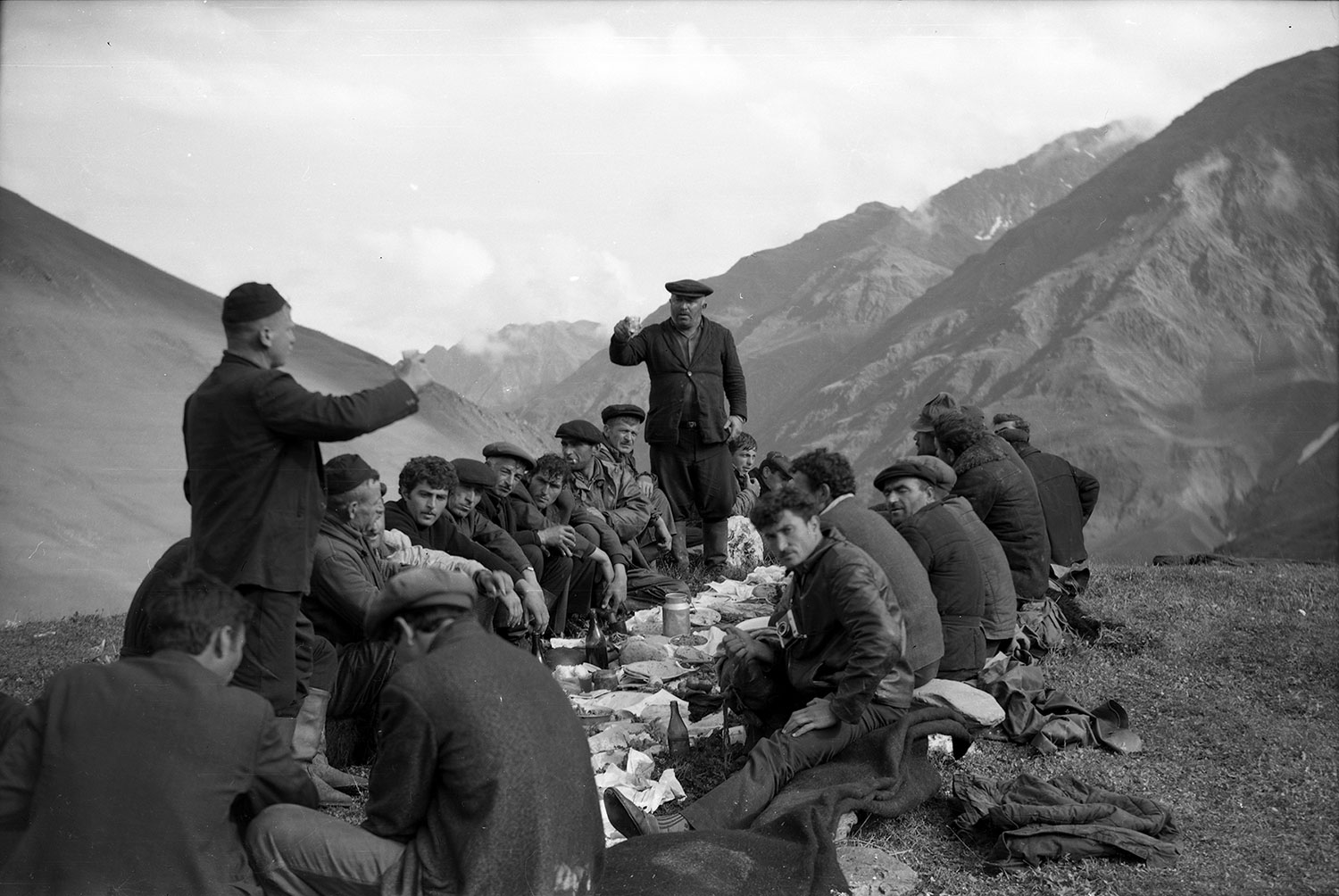
On the Road to Tusheti
Shalva Alkhanaidze: A Free Spirit of Soviet Georgian Photography
The very rich archive of Shalva Alkhanaidze, a self-taught Georgian photographer from Tusheti (high mountain region in North-Est of Georgia on the border with 2 North Caucasian Republics – Dagestan and Chechnya), was discovered by pure accident in 2005. Since that period, Akhanaidze is considered as one of the most outstanding authors of Georgian Photography of the second half of 20th century.
The body of work created by Shalva Alkhanaidze during the Soviet period (1950-1975) is absolutely free of the dogmas of Soviet photography and represents a rare example of non-propagandistic documentary photography of the middle of the past century.
Development of Georgian photography in the second half of 20th century was stamped by the lasting tradition of USSR to use art as an ideological tool. That was also the reason why the photography of Soviet period in all ex Soviet republics is not, in generally, free of ideological and political influences. In history of Georgian photography, Shalva Alkhanaidze has filled the gap made by only political propagandist use of photography during 70 years, in USSR.
Native of high mountain region - located on 2 500 meters above sea-level, Shalva Alkhanaidze has only photographed his native land -Tusheti.
His archive, that gathers thousands of photos, is a brilliant visual chronicle representing one of the most beautiful alpine regions of Georgia, Tushetian traditions, customs, nature and everyday life of local people. The region that is “isolated” from the rest of the country and remains inaccessible during almost 9 months – from the moment when first snow falls till the end of May.
Shalva Alkhanaidze was born in 1927, in the village Dano, in so called “other side of Tusheti”. Because of his poor health, unlike the most men in Tusheti, Shalva was forced to refuse to work as a sheep-breeder. He tried a lot of different professions, until he found out photography. After that, he did some urgently made photo studio in his own house and began to shoot. In his studio, he would shoot portraits. And outside the studio, in villages – Dano, Dartlo, Shenaqo - he was shooting the people living and working there, being glad and cheering up, being sad… people, loving and worshiping nature. He was taking photographs of landscapes as well, as if he bowed his head in front of the nature.
Shalva Alkhanaidze’s archive includes photographs taken during 1950-1975 years and two vast series: portraits for passports and series of images representing the everyday life of Tushetian villages.
“Passport Photo“
Up to twenty, large-sized portraits are included in these series. Photographs are taken during 1960-1975 years. Shalva Alkhanaidze would shoot portraits in his homemade studio, in Alvani (Tusheti). Accordingly, in front of his lens would stand tens of locals of his same age, from the same village, during various periods of time. In the village studio, the photographer with his exquisite vision, while shooting standard passport photos, creates perfect portraits: an old woman, high-fashioned, dressed up women, veterinaries, pilots, village matchmaker, teacher or a mere student, reflects and unites the signs of the actual time of the photographer, which is exceptionally interesting material to examine.
“On the Road to Tusheti”
Includes up to 50 photographs. These series are taken in different villages in Tusheti and mainly reflects everyday life of Tushetians, their fests and labor. Here are Reportage-photography-type work, made in 1950-1975 years.
First the work of Shalva Alkahanidze was exhibited in Tbilisi in the frame of Tbilisi Photo Festival 2011.
Exhibition presented by Tbilisi Photo Festival
Curated by Nestan Nijaradze
